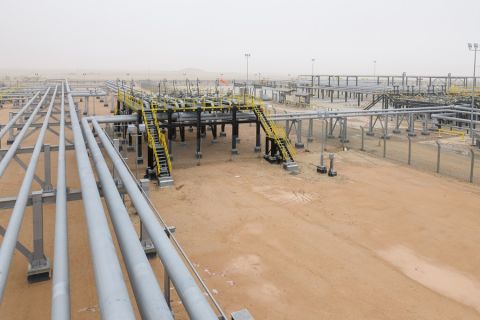For the U.K., winter is finally an after-thought, but the focus now turns to next winter and how to cover future energy needs amid an ongoing energy crisis prompted by Russia’s invasion of Ukraine. With storage levels rising and lower Russian energy inflows expected this year compared to last, the lingering question for U.K. citizens and politicians alike is how well they’ll be prepared for next winter.
The Russian-Ukraine war is the world’s most topical event, and arguably the most pressing geopolitical one. Even though the U.K. relied heavily on Norwegian oil and gas imports, it still had Russian oil, gas and refined oil import exposure. Putin’s war has led to a decline in Russian energy exports to the U.K. and driven up energy costs and stoked inflation.
U.K. Prime Minister Rishi Sunak says a new ‘U.K.-U.S. Energy Security and Affordability Partnership’ will reduce global dependence on Russian energy exports, stabilize energy markets and step-up collaboration around nuclear and renewables.
With LNG gasification terminals in Milford, Haven and Medway, the U.K. has turned increasingly to U.S. LNG, according to the Office for National Statistics, and U.S. LNG exporters look to again boost shipments across the Atlantic this year.
For the moment, the U.K. in particular and Europe in general will swap a reliance on Russian energy to that of the U.S. Maybe not the best long-term strategy, but it works for now.
Recommended Reading
Shipping Industry Urges UN to Protect Vessels After Iran Seizure
2024-04-19 - Merchant ships and seafarers are increasingly in peril at sea as attacks escalate in the Middle East.
Paisie: Crude Prices Rising Faster Than Expected
2024-04-19 - Supply cuts by OPEC+, tensions in Ukraine and Gaza drive the increases.
Report: Freeport LNG Hits Sixth Day of Dwindling Gas Consumption
2024-04-17 - With Freeport LNG operating at a fraction of its full capacity, natural gas futures have fallen following a short rally the week before.
Permian NatGas Hits 15-month Low as Negative Prices Linger
2024-04-16 - Prices at the Waha Hub in West Texas closed at negative $2.99/MMBtu on April 15, its lowest since December 2022.
BP Starts Oil Production at New Offshore Platform in Azerbaijan
2024-04-16 - Azeri Central East offshore platform is the seventh oil platform installed in the Azeri-Chirag-Gunashli field in the Caspian Sea.



